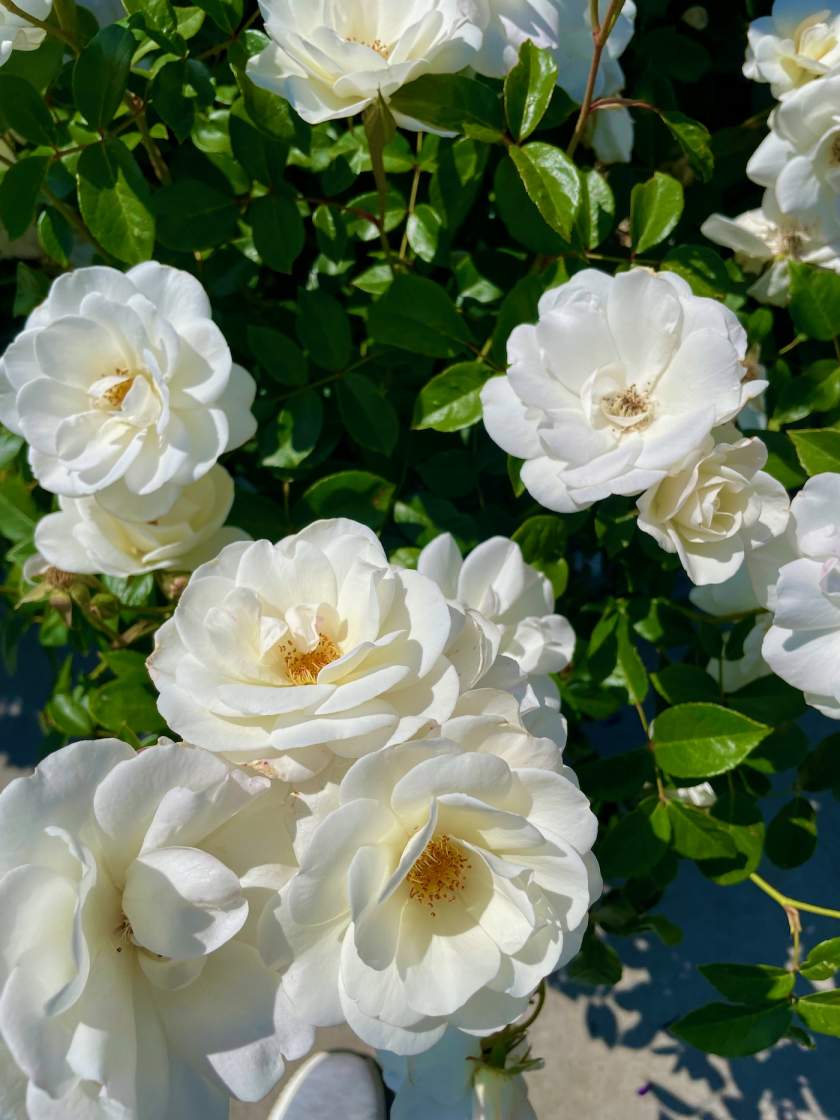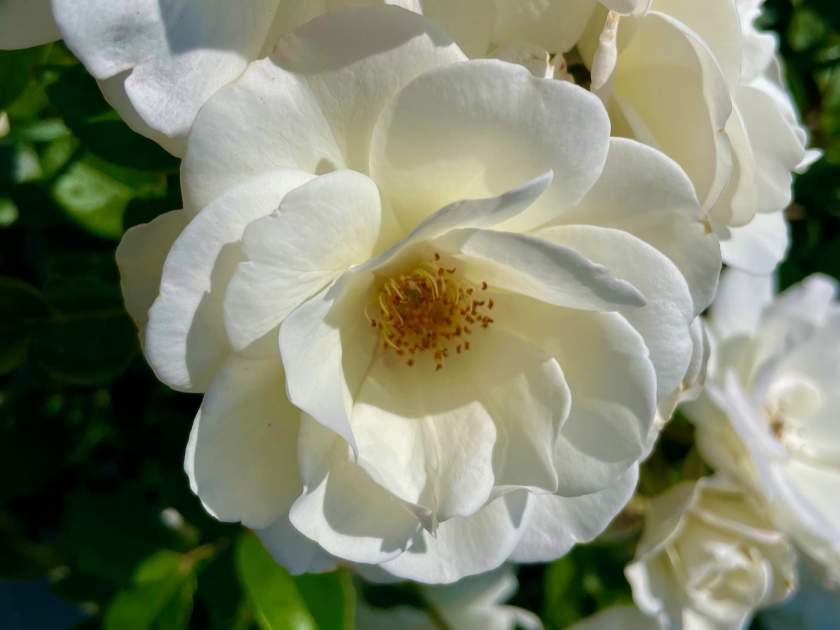The Award-Winning Floribunda Rose: Rosa ‘Iceberg’
Rosa ‘Iceberg’, also known as Rose ‘Iceberg’, Floribunda Rose ‘Iceberg’, Cluster Rose ‘Iceberg’, Rosa ‘Korbin’, Rosa ‘Fee des Neiges,’ and Rosa ‘Schneewittchen,’ is a highly acclaimed and beloved rose variety. This stunning floribunda rose has garnered popularity among rose enthusiasts worldwide, thanks to its abundant clusters of medium-sized, double flowers with soft white petals. With its repeat blooming habit and mildly sweet fragrance, ‘Iceberg’ has become a favorite choice for gardens and landscapes. Its versatility allows it to be grown as a bush, standard, weeping standard, or climbing rose, making it a fantastic addition to any garden setting.
Background and Characteristics Rosa ‘Iceberg’ belongs to the family Rosaceae and was bred by Kordes in 1958. The plant exhibits a tall, bushy, and upright growth habit with large, glossy, light green leaves that provide an elegant backdrop for its breathtaking floral display. Each flower boasts 30 to 40 delicate petals and exudes a light, sweet fragrance, adding to its charm. ‘Iceberg’ is a medium-sized shrub, typically reaching heights of 4 feet with a 3-foot spread, but as a climbing rose, it can ascend up to an impressive 12 feet.
Cultivation of Rosa ‘Iceberg’:
Sunlight: Rosa ‘Iceberg’ thrives in full sun, where it receives at least 6 hours of direct sunlight daily. Although it tolerates light shade, it performs best and displays optimal flowering and disease resistance in full sun.
Watering: Adequate watering is essential, especially during the first year after planting. For well-established plants, deep watering once a week is sufficient, or more frequently during hot and dry weather.
Soil: The ideal soil for Rosa ‘Iceberg’ is rich, fertile, and well-draining. Ensuring good soil drainage is crucial to prevent root rot and other water-related issues.
Fertilizing: ‘Iceberg’ requires minimal fertilization. A light application of balanced fertilizer every few weeks is enough to promote healthy growth and abundant blooms.
Pest and Disease Management: While ‘Iceberg’ is generally a hardy plant, it can be susceptible to some common rose pests and diseases. Regularly inspecting the plant for pests like aphids and spider mites is recommended. If detected, treat with neem oil or insecticidal soap. Additionally, Rosa ‘Iceberg’ may be prone to black spots and powdery mildew, so providing good air circulation around the plant can help prevent these issues.
Deadheading: Regular deadheading is essential to encourage continuous blooming. Simply pinch off spent blooms to stimulate new flower production.
Pruning: Prune Rosa ‘Iceberg’ in early spring before new growth begins. Remove any dead, diseased, or damaged branches and shape the plant to maintain its desired form.
Propagation: Rosa ‘Iceberg’ can be propagated through softwood cuttings taken in late spring or early summer. Dip the cut ends in rooting hormone and plant them in a well-draining potting mix. Place the cuttings in a warm, humid environment until they root successfully.
Additional Tips
- Mulch around the base of the plant to retain moisture and suppress weeds.
- Protect the plant from strong winds that may damage the delicate flowers and leaves.
- Water the rose regularly, especially during hot and dry weather, to maintain its health and vigor.
Rosa ‘Iceberg’ stands as a shining example of a truly remarkable and versatile rose variety. With its breathtaking clusters of white, double flowers and light, sweet fragrance, it continues to captivate gardeners and flower enthusiasts alike. Whether grown as a bush, standard, or climbing rose, ‘Iceberg’ adds elegance and charm to any landscape. By providing the right care, sunlight, water, and soil, gardeners can enjoy the beauty and splendor of Rosa ‘Iceberg’ throughout the blooming season, making it a true treasure among roses.





